15 Modern Drywall Texture Types: Contemporary Finishes
Author: Rick Worst | Editor: Omar Alonso
Review & Research: Jen Worst & Chris Miller
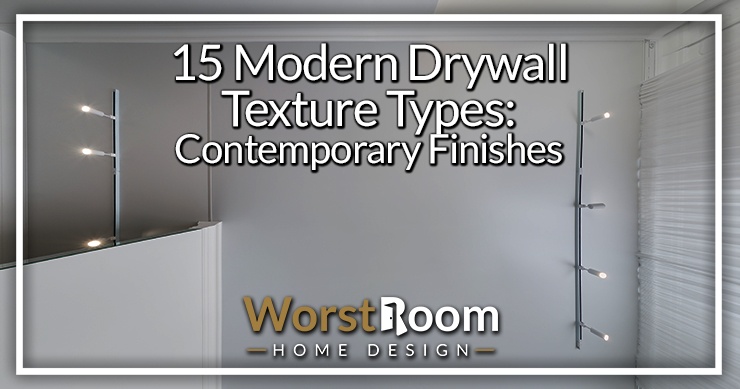
You can pretty much guarantee that somewhere in your home you'll have drywall as the main basis for your walls. Most homes are entirely covered in drywall on the interior, and this can become boring so it's important to spruce it up with some modern drywall texture types.
Drywall is a building material used to finish interior walls and ceilings. Drywall is composed of gypsum plaster sandwiched between two thick sheets of paper, and it can be applied over studs or existing wallboard.
15 Modern Drywall Texture Types
There are many different types of modern drywall textures you can choose from when finishing your project. Below are some examples that can be completed on nearly every type of drywall. You'll find your new favorite texture patterns for drywall here, for sure.
Flat Finishes
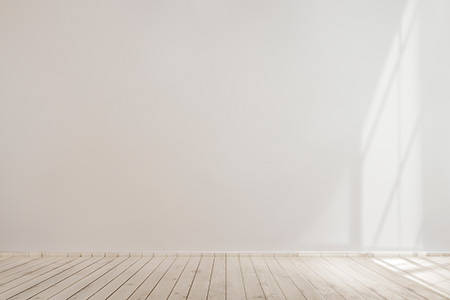
Flat drywall finishes are common in modern homes and suitable for walls and ceilings. Flat textures are easy to clean and paint over.
Flat finishes are easy to paint because they have little variation in terms of depth. Flat drywall finishes work exceptionally well in rooms where it's hard for light fixtures or wall decorations to stand out.
They are easy to use for new homeowners who want to change the look of their space without spending a lot of money or time on a complete renovation.
Smooth Textures
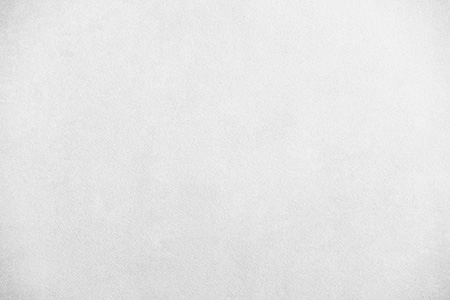
Smooth is the most common drywall texture. It's also one of the easiest to install and repair. Smooth drywall is an excellent finish, in high demand, for large areas because it hides imperfections well. It's also good for areas with heavy traffic because the smooth finish is easy to clean in case of dust or fingerprints.
A smooth drywall wall with no grout lines works incredibly well in kitchens, bathrooms, and laundry rooms. The walls appear seamless from floor to ceiling without any seams visible. You just need perfect drywall tape application so you don't deal with cracks and drywall tape bubbles to fix.
Orange Peel
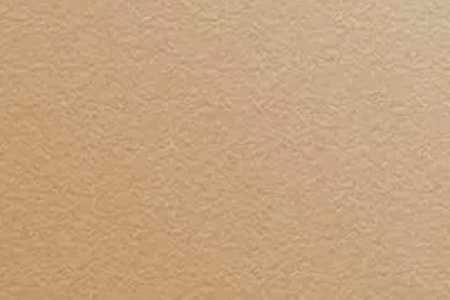
Orange peel is a smooth texture that has an orange peel effect. This look is trendy in modern, contemporary homes and works well in large rooms with high ceilings.
An orange peel texture differs from other traditional texturing techniques. It uses many tiny splutters of drywall mud to create its appearance. The result is similar to an orange rind (hence the name). You get ridges across the surface that have even spacing from each other.
Orange peel has become one of the most popular drywall textures on walls because it's so versatile; you can use it to create any kind of look you want—from rustic to contemporary—while maintaining that classic textured finish.
Knockdown Finish
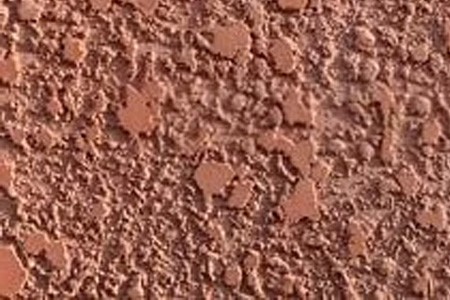
Knockdown texture is a trendy drywall texture. It has bumped surfaces, but they are smoothened and do not have the points that pop out.
When it comes to creating a knockdown drywall finish, there are two options. You can either use a texture sprayer or an airless sprayer. The texture sprayer is best for a large area, while the airless sprayer is best for small areas.
Next, you'll need to run a mudding knife across all areas of your drywall until they're smooth and free of any bumps.
Sprayed Texture
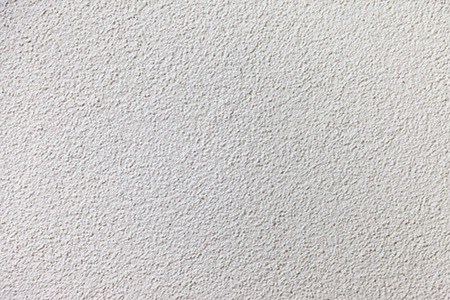
The sprayed texture is a modern drywall texture applied with an airless sprayer. You can use it to cover up imperfections in the drywall and create a new look for your walls. Sprayed texture can also serve as a base coat for other drywall textures, like skim coats or stucco.
If you're looking for a way to update your room without spending too much time or money, consider using sprayed texture. These modern drywall texture types are quick and easy to apply, though you need patience while it dries. The finish is spectacular, though.
Concrete Texture
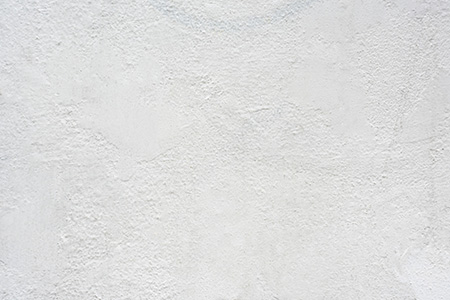
Concrete drywall is a textured finish that looks like the surface of the concrete. You can achieve it by applying drywall mud to the wall and then scraping it off, leaving behind grooves in the paint. Of all the different drywall textures, this is a strange option to me, but people like it.
Depending on how deep you want your grooves to go, you can make the application over many days or weeks. However, there are ways of speeding up this process so that one day becomes enough for your concrete look!
The color options for this type of texture are endless. You can use white paint with colored grout lines or choose any other combination you desire! Concrete has been popular recently due to its ability to create an affordable yet stylish look that fits into any home decor style.
Slap Brush & Crow's Feet Texture
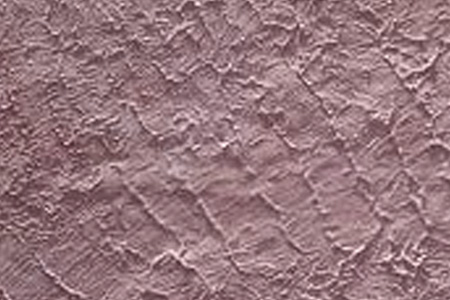
Slap brush texture is one of the most popular drywall textures because it gives rooms a spotless, modern look. It's sometimes called a crow's feet texture. It's also an easy-to-create texture that you can pull off with minimal tools or experience.
You can create the lap brush texture using a hand-held tool called a slap brush to apply water and joint compound over the entire surface of the drywall panel.
The light pressure used when applying this mixture creates small peaks on your surface, which will help create a more dramatic and defined appearance when it dries. Adding more layers of mud can create even more definition in your finished wall.
Plaster Relief
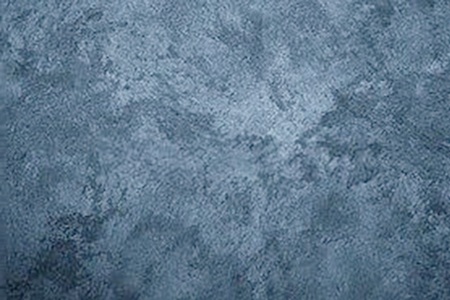
The plaster relief texture is one of the more modern drywall finish types that gives the appearance of old plaster walls. It is trendy in modern homes and often used in kitchens and bathrooms.
This texture creates an impression of unevenness and randomness. The venetian plaster relief dries with a smooth finish, so it's suitable for areas where you want to avoid any reflection (such as around windows).
It is effective when painted white or gray because these colors absorb light better than shiny paints. Sometimes you'll see it in a bold blue where the color is derived from the dust of various types of marble. This is expensive and takes a long time to polish, but looks great when completed.
Large Swirls Texture
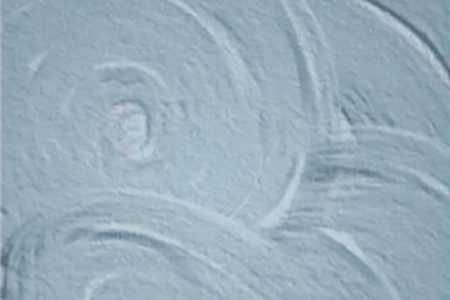
The large swirls texture is a drywall surface with an irregular pattern. You can create large swirls on drywall using a soft trowel with a large size. The edges of the swirled pattern are rounded and smooth, while the center has more texture and variation for an exciting look.
Most homeowners prefer this sand swirl design because it gives them an easy way to create unique patterns without risking damage to walls or ceilings.
Creating swirls requires very little skill but does require patience. Looks will vary slightly depending on how much pressure you put into each stroke before moving on to another one. There may be some trial and error until you reach your desired level.
Grey Popcorn
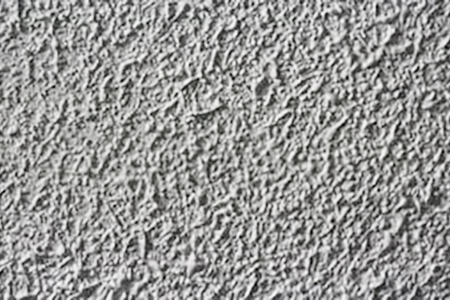
Gray popcorn is the most popular textured finish. It is a smooth, flat surface with a random pattern of small bumps raised slightly above the surface. You've seen it before, because white popcorn is easily the most widely used type of ceiling texture.
You can achieve the gray popcorn texture by spraying a joint compound onto the drywall. Styrofoam pieces on your wall will cause the material to be applied in small amounts at random locations across the surface area of your wall.
You can apply the gray popcorn over existing plaster or walls previously covered with another type of texture like orange peel or rock.
Hair Comb
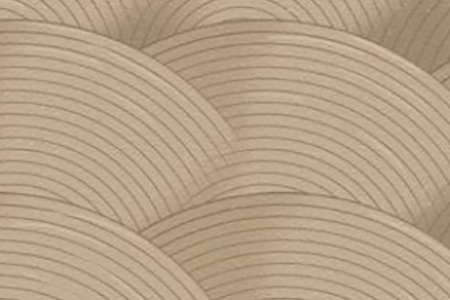
The hair comb is a fine, almost invisible texture that looks like it's been applied with a giant brush and then gently combed. It's a popular modern drywall texture type because of its clean appearance and ability to disguise imperfections.
You can find the hair comb modern drywall texture types in high-end homes built on a budget and luxury homes where money is no object. It's not just for walls! You can also use hair combs on ceilings.
Skip Trowel / Stucco Texture
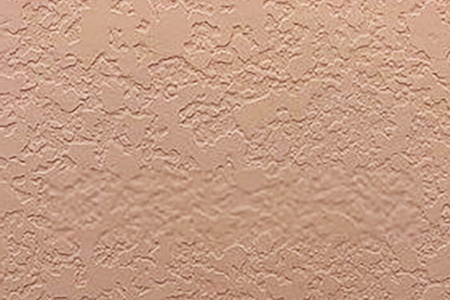
Skip trowel is a smooth texture with larger bumps and is similar to the flat finish but more consistent. If you've seen any types of stucco on the outside of a house, you know the look. It's very popular for commercial and residential spaces because it gives a nice finish without being too rough or hard to clean.
The skip trowel is created by dragging the tool over the surface of the wet plasterboard at an angle, producing a final result that looks like coarse sandpaper. Skip trows look great on ceilings or walls around windows or door frames where higher levels of detail are required.
Lace Texture
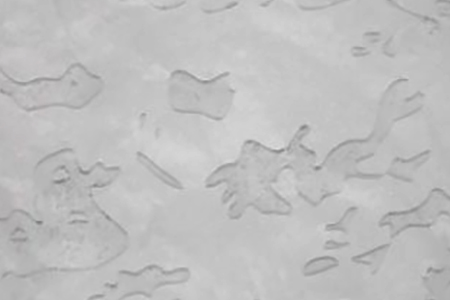
The lace look offers randomly shaped bumps that cover a much larger surface area than a stucco look that are more dispersed, showing a flat surface between them. The result is a more feminine and "romantic" look, for lack of a better word.
To create this look you have to mix the drywall spackle with water to thin it out and then spray it on. Let the spackle dry completely. Don't try to sling it on as you won't get the randomized look you need. You need random splatters coming from perpendicular, which slinging can't provide. Cutting down the bumps first and then lightly sanding with the right grit sandpaper for drywall is how you finish this style.
Santa Fe Texture
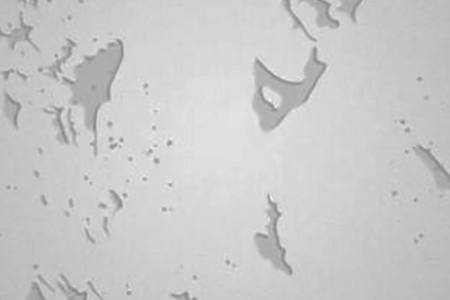
This is one of the oldest texture patters for drywall, called Santa Fe, which is coming back into popularity lately. Not only are there bumps but there are also similar indentations, providing a more three-dimensional feel. These swirls and indentations are placed at random with spacious flatness between.
Bumpy Concrete Texture
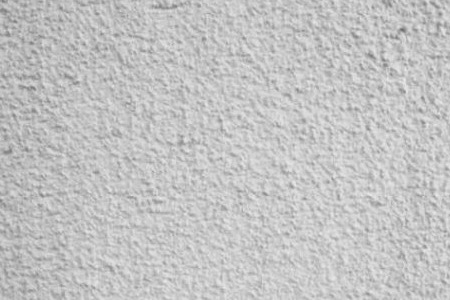
Bumpy concrete texture drywall finish has a rough surface that resembles concrete. The texture is created by applying the compound over the drywall surface, letting it dry, and then slightly sanding off the excess mixture. The result is a textured, bumpy surface with a concrete-like appearance.
To create a bumpy concrete texture, you first need to apply joint drywall compound over the entire surface of your wall (1/4 inch deep). This isn't unlike the different types of drywall texture above, but the next step is what makes this unique.
Then use a trowel to apply the texture mix over the compound, sanding it down until you get the desired amount of bumps and ridges in your wall. Finally, seal it with another coat of joint compound or spackle and let it dry completely before priming and painting as usual.
The bumpy concrete texture is a trendy design for those who want to give their rooms a rustic look. It's also commonly used in commercial spaces like restaurants and bars.
Modern Drywall Texture Types for a Contemporary Finish
As with any decorative drywall, the best choice from among the modern drywall texture types can be somewhat subjective. However, knowing the difference between a smoother and a scratchy texture will help you decide what works best for your project.



